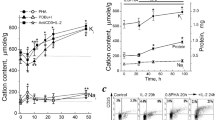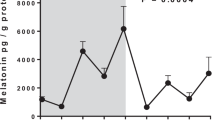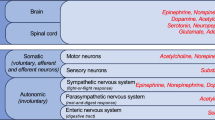Abstract
THE activation of lymphocytes by mitogens is a complex phenomenon which can be subdivided into reactions occurring on the surface of the cells1 followed by a chain of intracellular reactions caused by biochemical alterations in the membrane2. With respect to the mediation of the mitogenic signal from the membrane to the nucleus it has been claimed that 3′,5′ – cyclic GMP either directly fulfils a role as a ‘second messenger’3, or that a 3′,5′–cyclic GMP-dependent step is involved in the chain of intracellular reactions culminating in cell mitosis3,4. These assumptions are based on the facts that after the addition of lectins to peripheral white blood cells depleted of granulocytes and monocytes, an increased intracellular concentration of 3′,5′–cyclic GMP was detected3 and that 3′,5′–cyclic GMP added exogenously activated DNA synthesis in spleen and thymus cells in vitro4–6. The prerequisites for the validity of the above mentioned hypothesis, however, are that the 3′,5′–cyclic GMP levels are indeed increased in all cells entering the mitotic phase and that 3′,5′–cyclic GMP added exogenously acts directly on the lymphocytes, without the participation of other cells.
This is a preview of subscription content, access via your institution
Access options
Subscribe to this journal
Receive 51 print issues and online access
$199.00 per year
only $3.90 per issue
Buy this article
- Purchase on Springer Link
- Instant access to full article PDF
Prices may be subject to local taxes which are calculated during checkout
Similar content being viewed by others
References
Greaves, M. F., et al., Transplantn Rev., 11, 87 (1972).
Singer, S. J., Adv. Immun., 19, 34 (1974).
Hadden, J. W., Hadden, E. M., Haddox, M. K., and Goldberg, N. D., Proc. natn. Acad. Sci. U.S.A., 69, 3024 (1972).
Diamantstein, T., and Ulmer, A., Immunology, 28, 113 (1975).
Weinstein, Y., Chambers, D. A., Bourne, H. R., and Melmon, K. L., Nature, 251, 352 (1974).
Watson, J., J. exp. Med., 141, 97 (1975).
Gery, I., and Waksman, B. H., J. exp. Med., 136, 143 (1972).
Diamantstein, T., and Ulmer, A., Immun. Commun. 4, 57 (1975).
Calderon, J., and Unanue, E. R., Nature, 253, 359 (1975).
Goldberg, N. D., O'Dea, R. F., and Haddox, M. K., Adv. Cyclic Nucleotide Res., 3, 156 (1973).
Alford, R. H., J. Immun., 104, 698 (1970).
Diamantstein, T., and Ulmer, A., Immunology, 28, 121 (1975).
Diamanstein, T., Rühl, H., Vogt, W., and Bochert, G., Eur. J. Immun., 3, 488 (1973).
Author information
Authors and Affiliations
Rights and permissions
About this article
Cite this article
DIAMANTSTEIN, T., ULMER, A. Stimulation by cyclic GMP of lymphocytes mediated by soluble factor released from adherent cells. Nature 256, 418–419 (1975). https://doi.org/10.1038/256418a0
Received:
Accepted:
Issue Date:
DOI: https://doi.org/10.1038/256418a0
This article is cited by
Comments
By submitting a comment you agree to abide by our Terms and Community Guidelines. If you find something abusive or that does not comply with our terms or guidelines please flag it as inappropriate.



